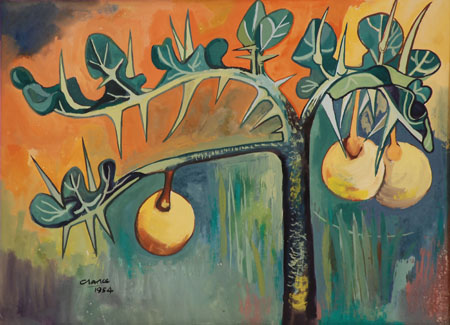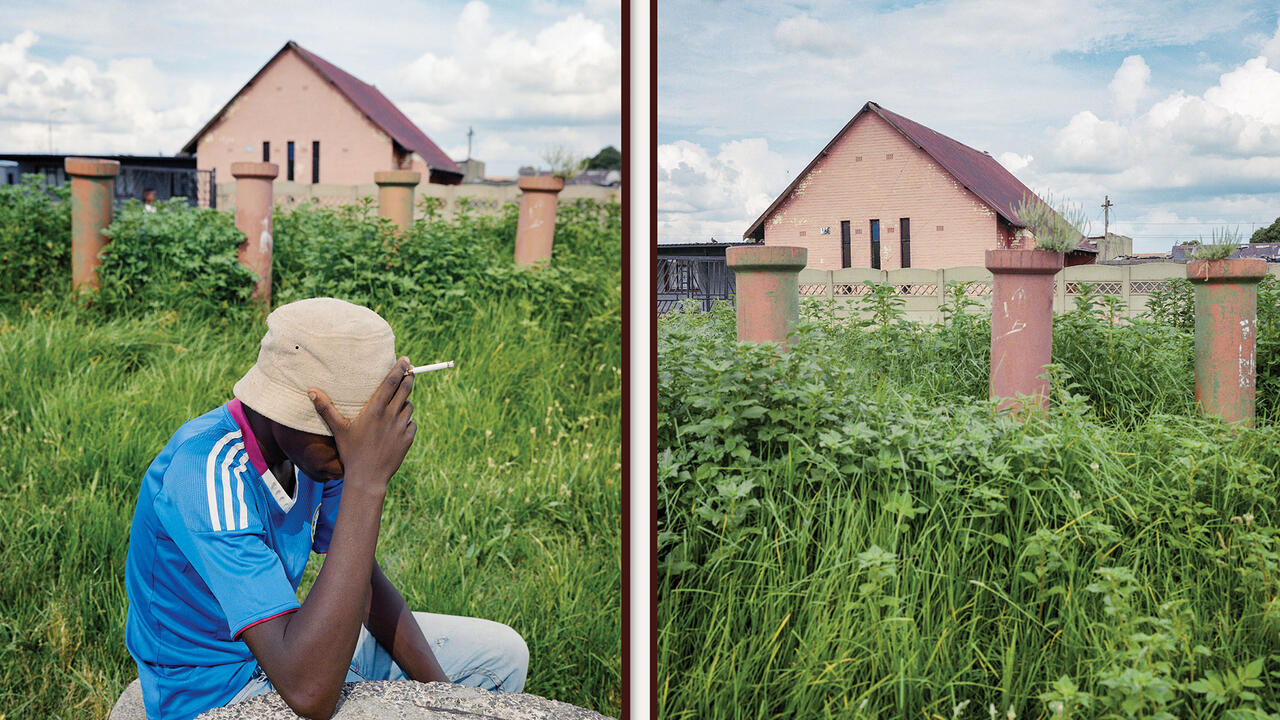High & Lows
The rise and fall of biennials in the Democratic Republic of Congo, Senegal and South Africa
The rise and fall of biennials in the Democratic Republic of Congo, Senegal and South Africa

In August, two months before the opening of the 2012 Rencontres Picha – the third edition of the Biennale de Lubumbashi in the Democratic Republic of Congo (DRC) – the event was unexpectedly suspended ‘for financial reasons alone’, according to the organizers, Sammy Baloji, Patrick Mudekereza and Elvira Dyangani Ose. In Cape Town, a port city once connected by rail to Lubumbashi’s copper mines, a colleague of mine groaned with disappointment. A few days earlier she had proudly shown me her bruised arm, the result of mandatory inoculations against yellow fever and other tropical viruses. Her encounter with central Africa’s mosquitoes will have to wait until 2013, the new launch date for Rencontres Picha.
Speaking at the Joburg Art Fair in September, Ose – who is from Equatorial Guinea – mooted plans to stretch the event over the entire year. Given the participatory collective practice she likes, it may be a viable plan. ‘There has been a dramatic increase in artistic and cultural production that challenges the definition of urban space and the public sphere in the past decades,’ she explained. ‘These initiatives blur the boundaries between art and everyday life, between art and non-art audiences.’
In her contribution to Rogue Urbanisms, a forthcoming edited volume compiled by two prominent theorists of African urbanity, Edgar Pieterse and AbdouMaliq Simone, Ose mentions how artist organizations and collectives ‘have gone a step further in their attempts to open up critical debate on the issue of public space and a reformulation of audience participation’. Amongst the groupings that excite her: the Centre for Contemporary Art of East Africa in Kenya; Muv’art in Mozambique; curator Gabi Ngcobo’s Center for Historical Reenactments in Johannesburg; and the work of choreographers Faustin Linyekula of Studios Kabako in the DRC and Sello Pesa of the Johannesburg-based Ntsoana Contemporary Dance Theatre. They are all championing a ‘new social imaginary of urban space’, said Ose during her talk.
In many instances, the informal groupings listed by Ose are far more agile, durable and adaptable than the organizations piloting the continent’s handful of single-city biennials. As it is, biennials are a difficult idea, conceptually as well as financially, to implement and sustain in Africa. In South Africa, for instance, where European models of art practice have become deeply rooted, these large-scale spectacles are typically pitched at miniscule audiences; historically, they have tended to pop and fizzle by their third iteration. Launched within six months of each other in Cape Town in 2007, both the CAPE Biennale and Spier Contemporary, a privately funded regional biennial art competition and exhibition, were terminated after their second installments. A decade earlier, the Johannesburg Biennale similarly lasted only two rounds, Okwui Enwezor’s audacious second installment, held in 1997, closing prematurely following poor attendance and an ambivalent attitude to its existence by city officials.
The legacy of Enwezor’s biennial, which in many respects formed the closing bracket to the strange and creative fluorescence prompted by Nelson Mandela’s release in 1990, was the subject of an intriguing trilogy of exhibitions at Stevenson Gallery. The first exhibition, ‘Trade Routes Over Time’, held at its Cape Town headquarters earlier this year, offered the historical context, showing a mix of new and old works by the likes of Stan Douglas, Olafur Eliasson, Pierre Huyghe, Isaac Julien, Wangechi Mutu, Yinka Shonibare and Penny Siopis – who, in 1997, were all young and largely unheralded participants in Enwezor’s moving-image-rich biennial. This opening show was followed, in Johannesburg, by ‘If a Tree …’, a kind of belated third installment of the city’s biennial, if you will. Curated by Clare Butcher, the show included an installation of sculptural objects and chalk drawings, 30 Minutes of Amnesia, Scene 2 (2012), by Kemang Wa Lehulere.
Wa Lehulere, who is due to show with New York’s Lombard Freid Projects in 2013, is a former member – with Gabi Ngcobo – of Gugulective, a multi-headed artist collective equal in ambition and maybe even achievement to the Wu-Tang Clan. In 2010, their name appeared in the title of curator Riason Naidoo’s ‘1910–2010: From Pierneef to Gugulective’, a sprawling, conceptually inelegant if visually intriguing survey exhibition of South African art originated and hosted by the Iziko South African National Gallery in Cape Town. Earlier this year, Naidoo, the museum’s director, co-curated the tenth edition of Dak’Art, launched in 1992 and Africa’s longest running contemporary art biennial, held in the Senegalese capital of Dakar.
Naidoo also oversaw a monograph show at Dak’Art devoted to octogenarian South African painter and man of letters, Peter Clarke. Like 87-year-old Lebanese artist Etel Adnan – whose Documenta chapbook The Cost For Love We Are Not Willing To Pay is an absolute treat – Clarke is too old to hide from speaking simple truths. Like Adnan, he also paints in a kind of late-Modernist style that defies easy pigeonholing. A former dockworker who studied art part-time – notably under John Coplans in 1947 – Clarke became a full-time artist at age 27. He is now 83. ‘The unfortunate thing about being older is that so often people expect you to be dead,’ he told me a while ago, before Naidoo’s smart plan to introduce him to West Africa. ‘Therefore they don’t ask you about the future. What are you going to do in the future? It is a difficult question. The artist doesn’t retire.’






















